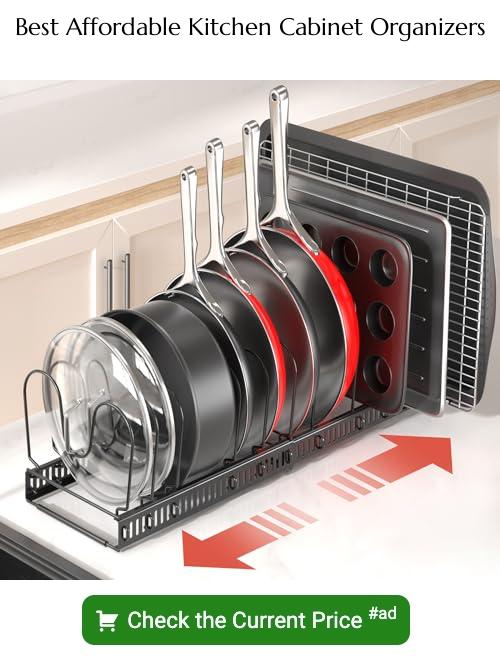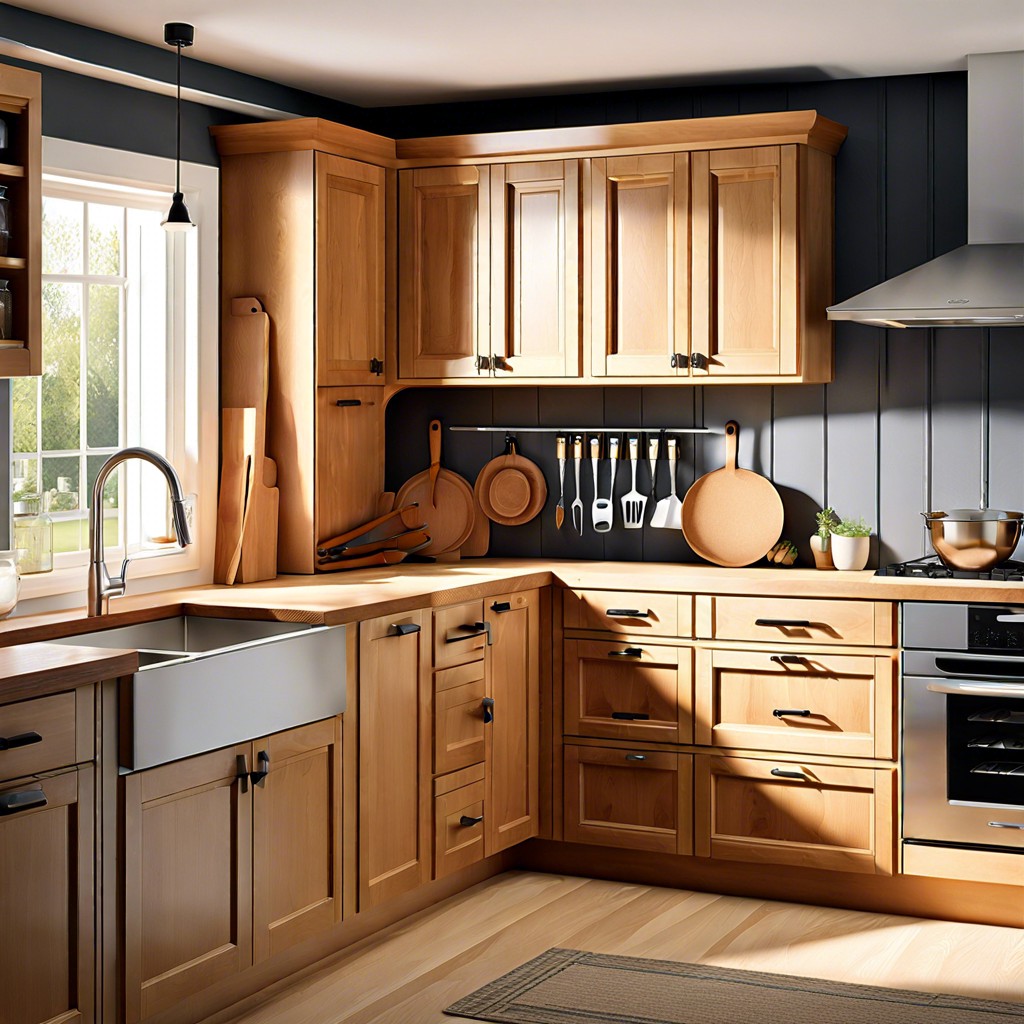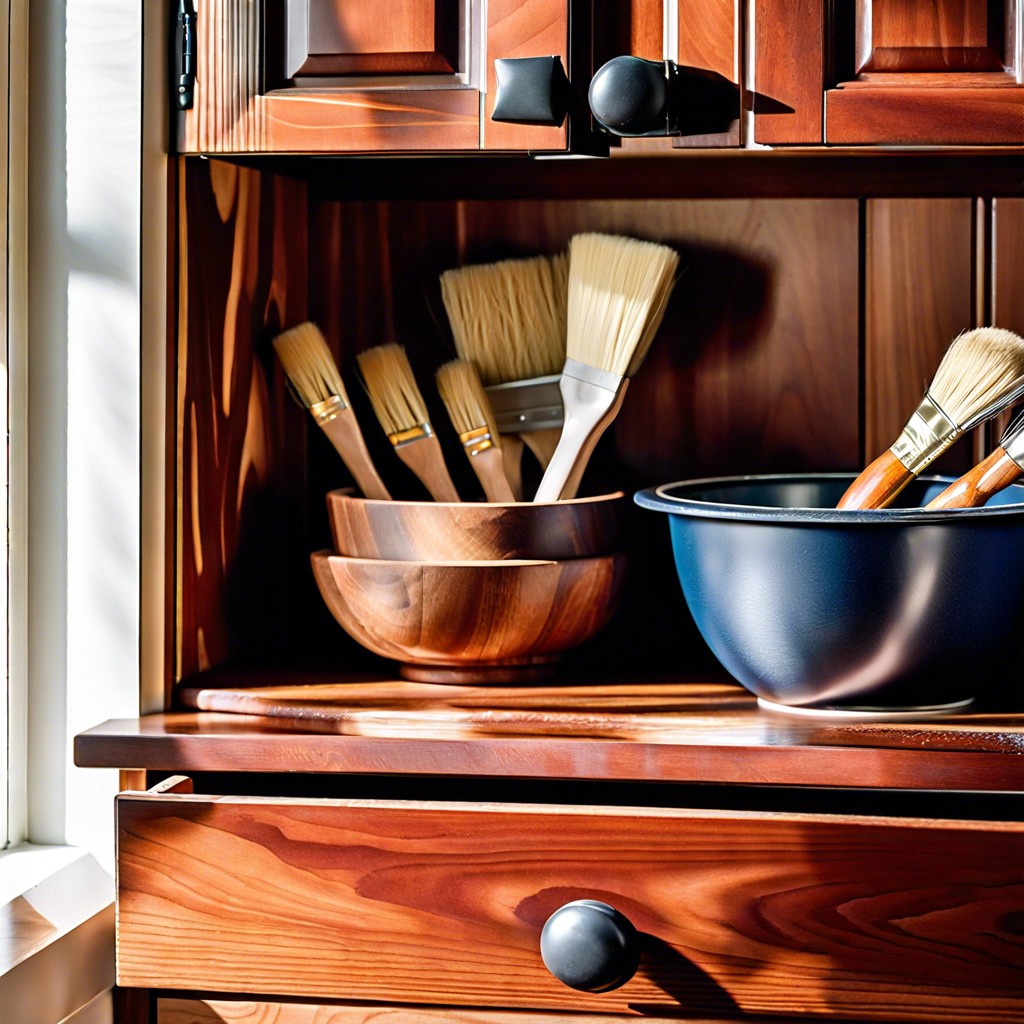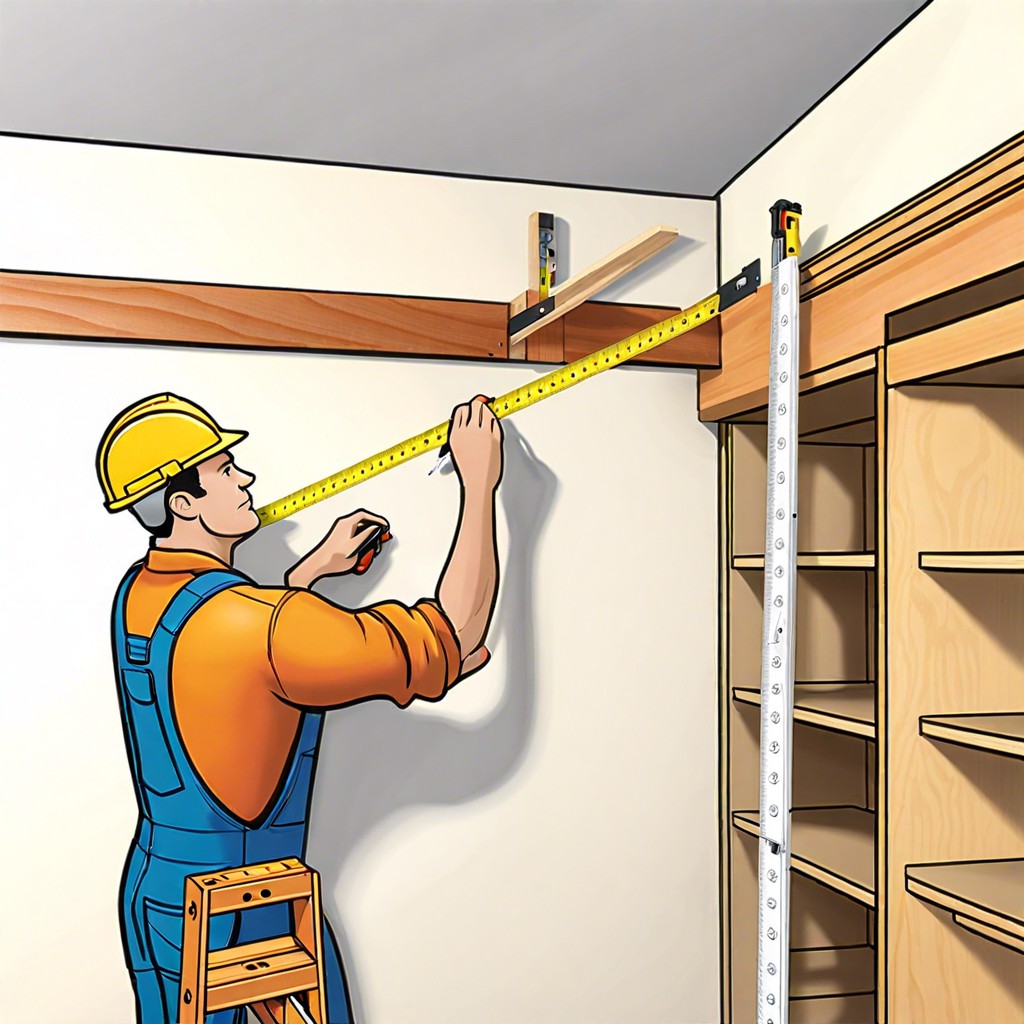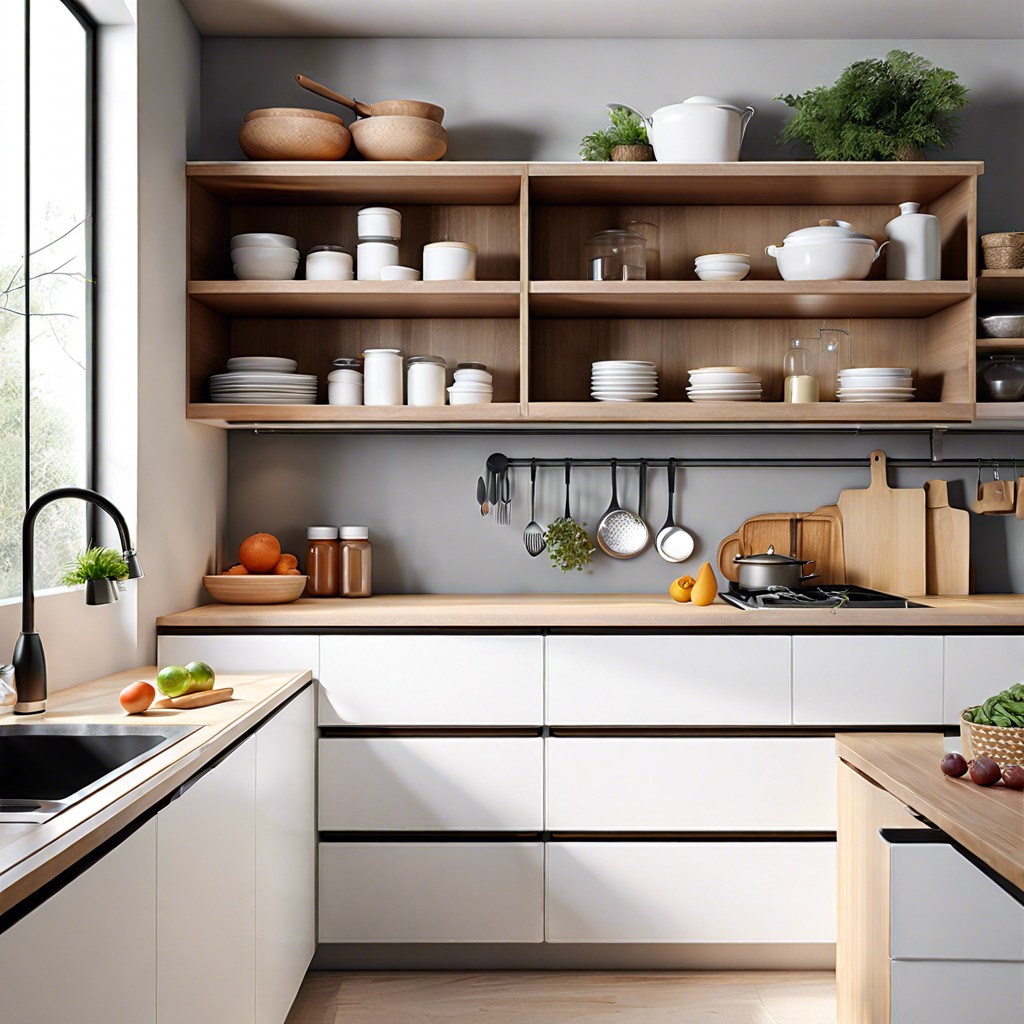Last updated on
In this buying guide, you’ll unearth practical information about the varied costs of kitchen cabinets, including different types, materials, and installation factors.
Key takeaways:
- Stock cabinets start at to 0 per linear foot.
- Fully custom cabinets can cost 0 to ,200 per linear foot.
- Material choice affects pricing, with solid wood being more expensive.
- Consider installation and additional renovation costs.
- To save money, consider stock cabinets, refurbishing, and shopping for discounts.
What's Inside
What Do Kitchen Cabinets Cost?
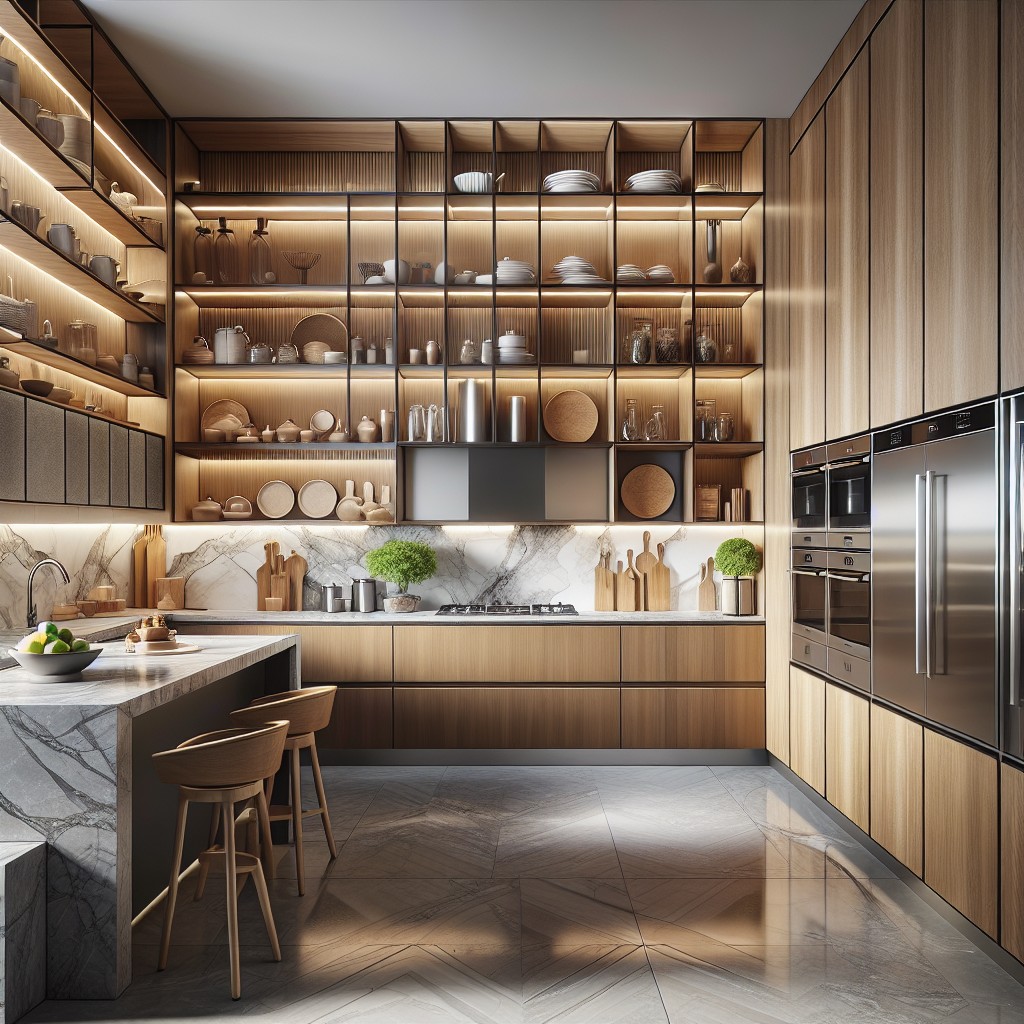
Understanding the cost of kitchen cabinets hinges on a mix of materials, craftsmanship, and design complexity. On average, stock cabinets, the most budget-friendly option, may start around $60 to $200 per linear foot, typically available in predefined sizes and styles.
Semi-custom offerings, providing a balance between price and personalized detail, range from $100 to $650 per linear foot. For those with specific visions leading to completely bespoke solutions, fully custom cabinets can leap to $500 to $1,200 per linear foot.
The choice of material also swings the price pendulum. Particleboard proves pocket-friendly but less durable, whereas solid wood commands a premium for its longevity and aesthetic. Moreover, finishes and hardware—think brushed nickel pulls versus hand-crafted knobs—can add or subtract from the final tally.
Remember, simplicity saves. Intricate designs and elaborate moldings will inflate expenses. Shaker-style cabinets might serve as a happy medium, offering a timeless look without the ornate cost drivers. Lastly, consider the layout: a galley kitchen’s linear nature might cost less in cabinetry than an L-shaped space requiring corner units and customization.
Keep in mind these figures provide a snapshot; prices vary widely by region and provider. Obtaining multiple quotes remains a staple advice for a well-informed decision.
Factors To Consider When Calculating Kitchen Cabinet Prices
Material quality significantly affects pricing. Solid wood cabinets, cherished for durability and aesthetic, command higher prices than those made from MDF or particle board. If your budget allows, investing in solid wood can mean longer-lasting cabinets with timeless appeal.
The cabinet design also plays a role, with custom solutions being the priciest. Stock cabinets are the most budget-friendly, while semi-custom cabinets provide a middle ground, allowing for some tailored features without the full cost of bespoke designs.
Finish and hardware choices can quickly add up. Opting for standard finishes and hardware can keep costs in check, while high-end, luxury finishes or unique hardware choices will increase the overall cost.
Don’t forget to consider the cost of installation, which can vary greatly depending on where you live and the complexity of the job. While DIY installation can save money, professional fitting ensures the integrity of the work and often comes with warranties.
Think, too, about the potential need for additional construction or renovation work. If the new cabinets don’t fit the existing kitchen layout, you may need to adjust electrical wiring or plumbing, which adds to the budget.
Size matters; larger kitchens require more cabinets and thus higher costs. Keep in mind that increasing the number of drawers or specialty units, such as lazy Susans or pull-out shelves, will also influence the final tally.
Ultimately, the cost of kitchen cabinets is not just about the cabinets themselves but encompasses materials, design, finishes, installation, and any additional renovations needed to accommodate your design choices.
Other Costs for New Kitchen Cabinets
When budgeting for kitchen cabinets, it’s crucial to account for additional expenses that extend beyond the unit’s price tag. Here’s what to keep in mind:
Installation: Hiring a professional can add a significant amount to your total cost. Depending on the complexity of the job, prices can vary widely.
Hardware: Handles, knobs, and pulls may seem minor, but can add up. Selecting high-quality hardware is important for durability and function.
Finishing: If you’re purchasing unfinished cabinets, remember the cost of paint, stain, or sealant required to complete the look and protect the material.
Customization: Any modifications to standard cabinet sizes or additional features like pull-out shelves or soft-close hinges will increase the price.
Delivery: Depending on where you purchase your cabinets from, there might be substantial delivery fees, especially for heavy or bulky items.
Old Cabinet Removal: Disposing of existing cabinetry usually comes with a fee that many forget to include in their initial estimates.
Sales Tax: While often overlooked, sales tax can affect the overall cost significantly, depending on your state’s tax rate.
By considering these often-overlooked factors, you can develop a more accurate budget for your kitchen renovation. Remember that investing a little more in these other costs can pay off in the long-term functionality and enjoyment of your kitchen.
Tips to Save On Your Kitchen Cabinets
Embracing stock models over custom designs yields significant savings without sacrificing quality. Stock cabinets come in standard sizes and are mass-produced, which knocks a considerable amount off the price. By carefully choosing these, you can achieve a high-end look for less.
Consider refurbishing existing structures where possible. This could involve painting, replacing just the doors, or changing out hardware for a fresh feel. These tweaks refresh your space at a fraction of the cost of complete replacement.
Keep an eye out for discounts and clearance sales at big-box retailers. They often clear out last season’s stock at reduced prices, which could translate into substantial savings for your project.
Another measure is to self-install the cabinets if you are handy and confident with DIY projects. Labor costs can eat up a huge chunk of your cabinet budget, so taking on the work yourself can save a lot.
Last but not least, shopping around for quotes and negotiating with suppliers may be time-consuming but can result in getting the best deal. Don’t hesitate to ask for discounts or better terms, especially if you are placing a large order.
Next Steps for New Kitchen Cabinets
Now that you’re armed with knowledge about costs and savings, it’s time to take action. Begin by setting a realistic budget, one that reflects both your financial limits and your desired outcome.
Next, gather inspiration by browsing design sites, magazines, or visiting showrooms to pinpoint your style and must-have features.
Once you have a clear vision, reach out for quotes from contractors or cabinetry companies, ensuring they break down all expenses. Don’t hesitate to seek multiple estimates to find the best value.
To further guarantee success, consider seeking the advice of a kitchen designer; their expertise can refine your plan and may even unveil potential savings.
Before committing to any purchase, double-check the credentials of your chosen supplier or installer. Reviews, references, and portfolios are your best friends in verifying their reliability and quality of work.
Take measurements meticulously or, if possible, enlist professional services to avoid costly miscalculations.
Lastly, prepare for the installation phase. Clear the kitchen space, establish a timeline with your contractor, and discuss the process to manage expectations.
With these strategic steps in place, you’ll be on the path to enjoying new kitchen cabinets that blend utility with aesthetics, all within your budget.
